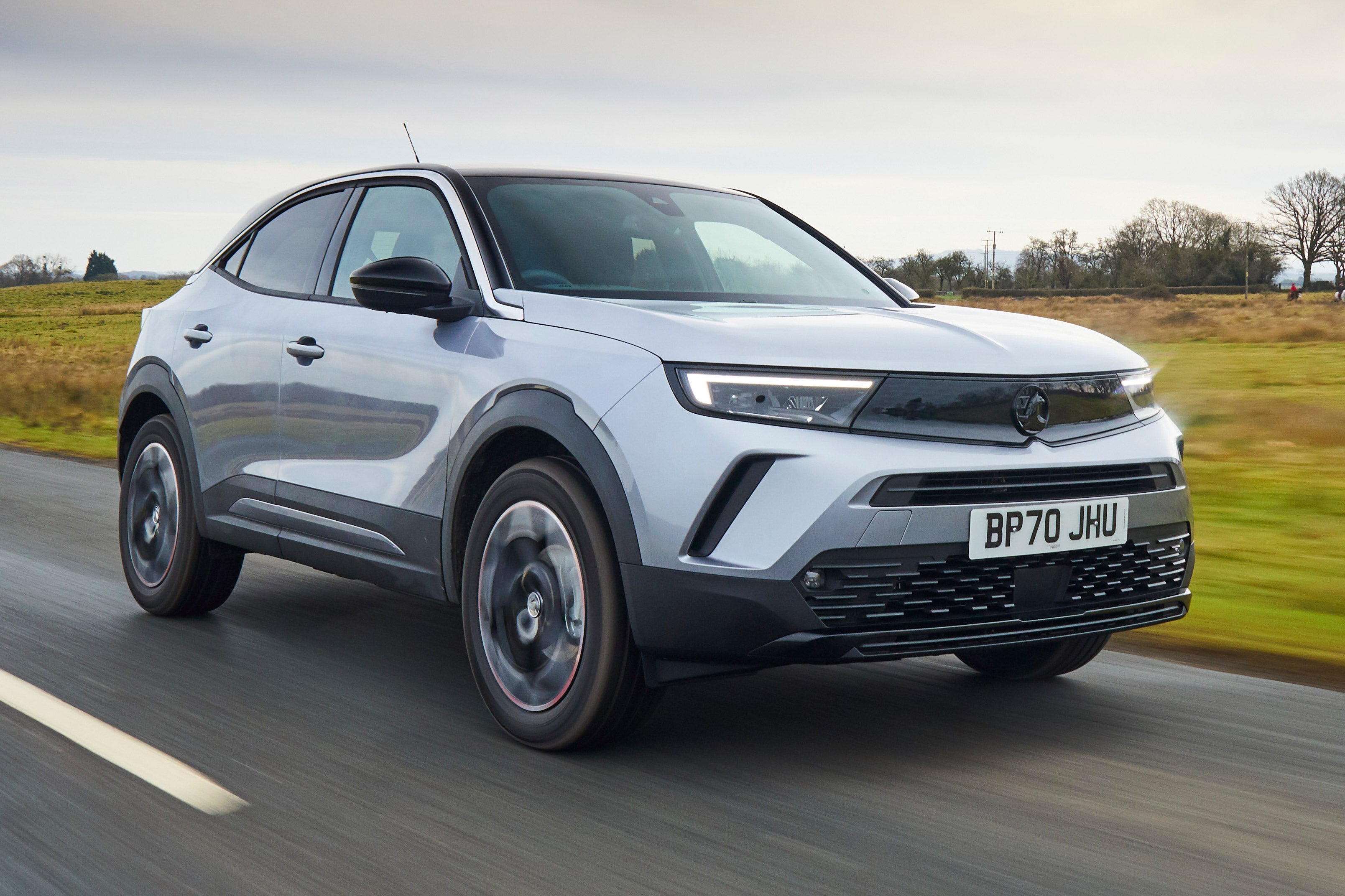Jeep Avenger e-Hybrid Review 2024
Written by Phill Tromans

- 2024
- Small SUV
- Mild Hybrid
Quick overview
Pros
- Great around town
- Stylish looks
- Good balance of efficiency and price
Cons
- Headroom is tight for taller occupants
- Small size means limited space
- Interior materials feel cheap
Overall verdict on the Jeep Avenger e-Hybrid
"The third version of Jeep’s little SUV is, we think, the best. The advanced mild-hybrid system gives it impressive efficiency, especially around town, and at a considerably lower price than the full-electric version. If you’re after something stylish and small for urban runabouts, it’s well worth a look, and it’s happy on longer motorway journeys, too."
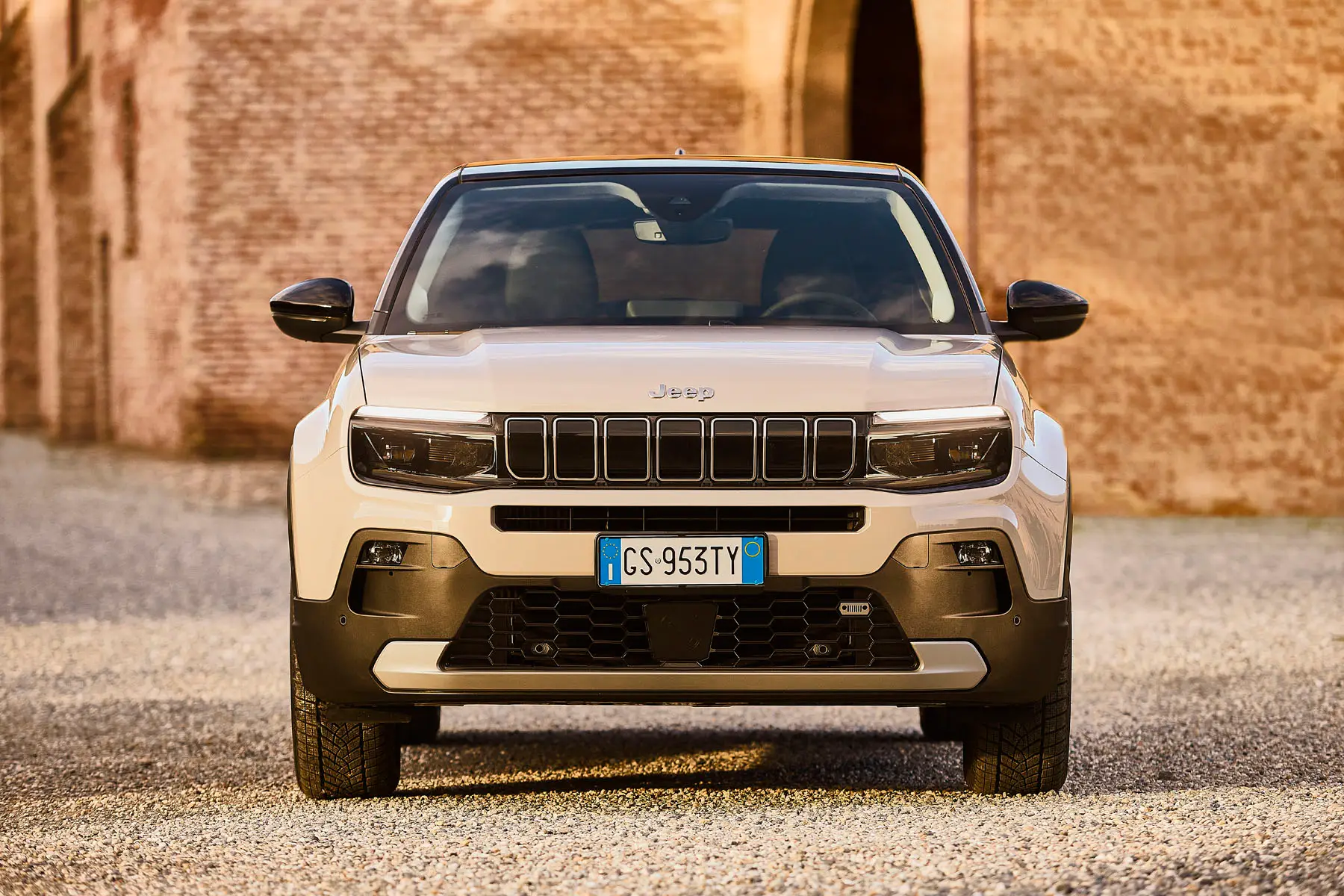
The Avenger is the smallest car that Jeep makes. The brand long famous for its big, go-anywhere machines has diversified in recent years, and while the Avenger retains some signature Jeep features (such as the famous seven-bar grille), it’s a long way from some of its rufty-tufty relatives, such as the mighty Wrangler. First introduced as the all-electric Jeep Avenger, it’s since spawned a petrol version and now this half-way house – a petrol-electric hybrid.
To get slightly technical, this is actually a mild-hybrid system, utilising a 48V electrical system and an electric motor integrated into the automatic transmission. But unlike most mild-hybrid systems, which only provide a boost to the petrol engine, this one lets you do small distances – just over half a mile – on pure electric power alone.
On paper, it offers some of the advantages of both the petrol-powered and electric Avengers. Price-wise, it’s not that much more than the petrol model – less than £2000 when new – but it represents a considerable saving over the electric version, starting at nearly £10,000 less as of early 2024. It also promises very decent fuel savings, with official fuel economy figures of up to 57.6mpg compared to up to 50.4mpg in the petrol model, thanks to its ability to run for short distances on electric power alone.
As it turns out, the paper promises translate very well into reality. We tested the Avenger e-Hybrid over a range a different roads (and even off-road), and found that the combination of its 1.2-litre petrol engine and its electric motor works almost seamlessly to claw back efficiency whenever possible, especially at lower speeds around town or in traffic. At the same time it’s got enough oomph to suit most situations.
Combine that efficiency with the same pluses that you get from other versions of the Avenger – stylish looks, a decent infotainment system and a solid driving experience – and you’ve got a really decent little car.
It’s not perfect, however. As one of the smallest compact SUVs on the market, it’s nippy and easy to park in tight spaces, but its dimensions limit its practicality – the boot is rather small and space in the back is tight too. It should be fine for kids, but adults will crave a bit of extra space. Some of the interior materials feel rather hard and cheap, too, but that’s forgivable for the price point and it doesn’t detract from a pleasant environment in which to sit.
All versions of the Jeep Avenger come recommended by us, but the hybrid model is the sweet spot.
Is the Jeep Avenger e-Hybrid right for you?
You’ll get the most out of the Jeep Avenger e-Hybrid if you’re looking for a small car with a stylish edge, and do a lot of relatively low-speed driving. While the Avenger is fine on the motorway, the hybrid drivetrain is at its best in stop-start traffic and around town where it can maximise electric-only driving and give you the best fuel economy. If you need something particularly spacious and practical then the Jeep may not be for you – there are roomier alternatives available – but that said, it’s still got more space inside than several other non-SUV city cars.
What’s the best Jeep Avenger e-Hybrid model/engine to choose?
The Jeep Avenger e-Hybrid has just the one power option, so your only choice is in trim level. The entry-level Longitude model is reasonably well kitted out, but the mid-range Altitude trim has some useful extras like adaptive cruise control, electric boot lid and a larger driver display behind the steering wheel. As the price rise when new is fairly small, we think it’s worth going for, so the Altitude model would be our pick.
If you’re feeling flush then the top-spec Summit model has extras like heated front seats as well as extra safety gear, but it starts to really push the price up.
What other cars are similar to the Jeep Avenger e-Hybrid?
If you’re considering a Jeep Avenger then you could also be looking at cars like the Peugeot 2008, the Fiat 600, the DS3 and the Vauxhall Mokka. These are all made by the same parent company as the Avenger – Stellantis – and share various engineering bits, but they each have their own quirks and advantages. We don’t think any of them have the presence or rugged looks of the Jeep, and nor can they think about any off-road work, which the Jeep can (more on that shortly).
Other cars to look at include the Hyundai Kona and the Kia Niro, both of which have excellent long warranties from new (five years and seven years respectively). The Toyota Yaris Cross also has a five-year warranty and a proven hybrid powertrain and the Nissan Juke has some eye-catching looks, while the Ford Puma has the edge on most cars of this type when it comes to practicality and driving fun, although it’s not available as a full hybrid.
Comfort and design: Jeep Avenger e-Hybrid interior
"The Avenger’s interior is rather utilitarian in its choice of materials, but the design is attractive and functional with an easy-to-use infotainment system. Space is at a premium, but it’s still a comfortable place to sit, and there’s a good amount of storage up front, if not in the back."
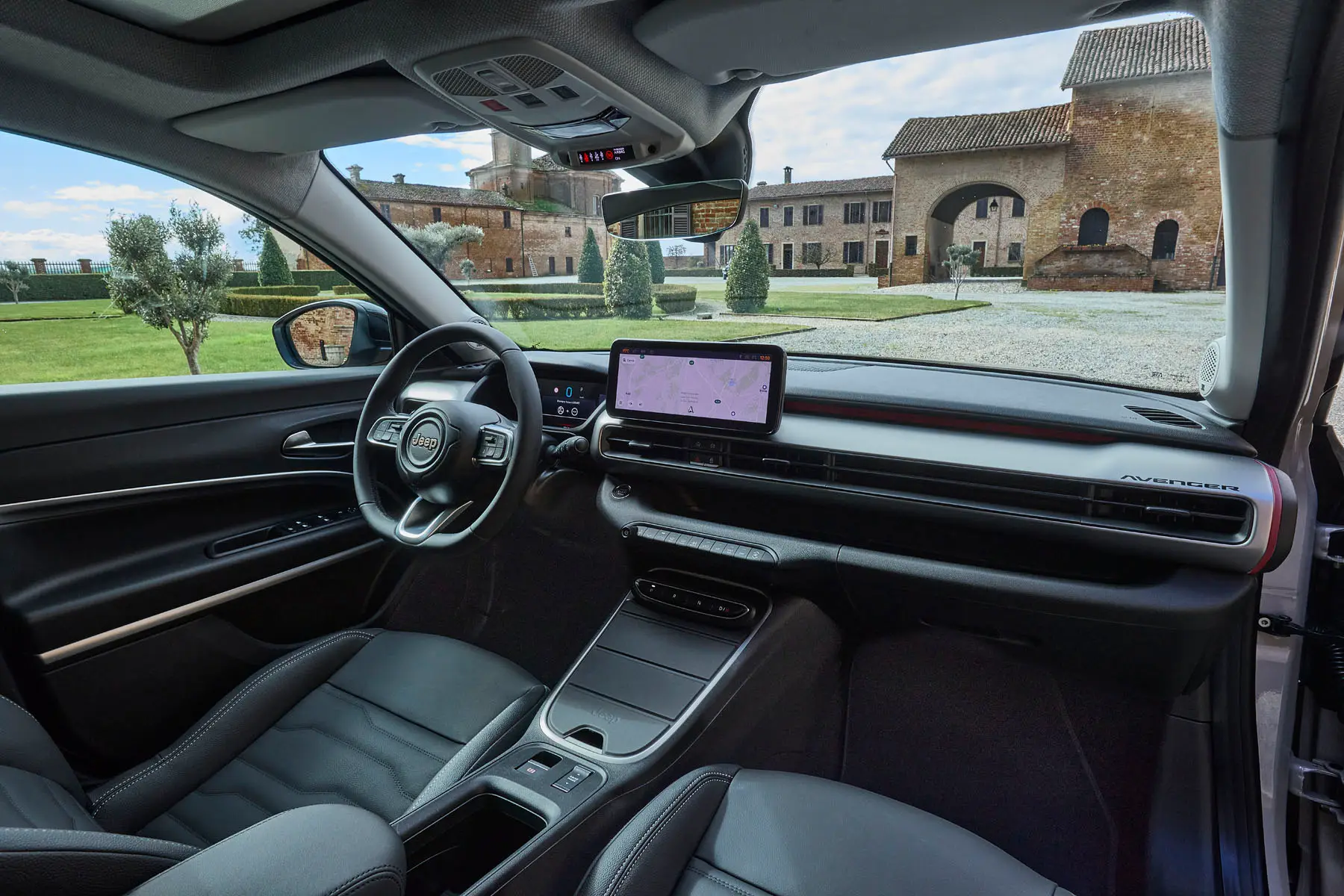
Jump into the Jeep Avenger e-Hybrid and you’re greeted by a classy environment with a few quirky design features that make it stand out against its competition. From the bucket-like storage area in the centre and the shelf that runs across the dashboard to the infotainment screen perched on top of the dash and the line of buttons and switches that look after various ancillary systems, it’s simple but stylish.
The driver’s seat has plenty of adjustment options (electrically on higher-spec models) and forward visibility is impressive, which is great for tight manoeuvring in town. Top-spec models get cameras to help even further with optimistic parking, and reversing sensors are included as standard.
Quality and finish
Let’s get the bad bits out of the way – the quality of materials used in various parts of the cabin of the Avenger isn’t great. The plastics are hard and feel cheap, particularly on the door cards.
Soft-touch materials are a scarcity here, but… does that matter? This is a Jeep after all, and it has a robust, wipe-clean utility feel built into its heritage, even if the Avenger isn’t a car in which you’ll want to wade through rivers and climb mountains. And besides, it doesn’t really detract from the interior’s appeal, which is comfortable and air to sit in. It isn’t posh, but it doesn’t really need to be, and in fairness the bits you touch the most – the steering wheel, buttons and gear shifter – all feel solid enough.
Infotainment: Touchscreen, USB, nav and stereo in the Jeep Avenger e-Hybrid
The Avenger e-Hybrid comes as standard with a 10.25-inch central touchscreen running Jeep’s infotainment system, which is called Uconnect. The latest version is a huge improvement on earlier Jeep models – it looks slick, is easy to use and is quick to respond. Having the screen perched atop the dashboard makes a quick glance across very simple. Navigation is an optional extra across the range, but Apple CarPlay and Android Auto are included as standard – we’d recommend you just use a navigation app from your phone.
All cars get a digital driver’s display instead of traditional analogue dials. Entry-level Longitude cars get a 7-inch unit, while the other models get a 10.25-inch version. There are both USB-A and USB-C charging points in the front, and a USB-C port in the back, but only one – the kids will have to fight over who gets to use it.
Space and practicality: Jeep Avenger e-Hybrid boot space
Space is not the Avenger’s USP – its diminutive size will be great for those nipping around town, but not so good if you need to carry a lot of stuff.
That says, it uses what space it has rather well. The boot has a 355-litre capacity, which is the same as a Seat Ibiza hatchback, and from mid-spec Altitude trim comes with an adjustable floor. This means you can raise the floor up to eliminate any lip to lug stuff over. The back seats fold down in a 60/40 split if you need to load larger items.
Most adults will be fine up for space front thanks to the range of adjustment in the seats, but a word of warning – taller front-seat occupants in Avengers equipped with a sunroof may find themselves low on headspace, particularly if they have a voluminous hairstyle. Space is tighter in the back. It’s just about OK for adults if the front-seat passengers aren’t stretched out, but it’s far from roomy. There’s also no storage at all in the back of the Avenger – no cup holders, no door pockets – nothing.
Luckily, there’s much more space up front – a shelf in front of the passenger that will hold several phones or pens, a decent-sized glove box, a big storage box under the dashboard and more space under the centre armrest, as well as reasonable size door pockets that will hold a drinks bottle.
Handling and ride quality: What is the Jeep Avenger e-Hybrid like to drive?
"While the Avenger isn’t the keenest handling car of this type, it’s pretty good all-round, especially around town, with nippy handling and a tight turning circle. It’s comfortable, too. And if you really need to, it’ll even cope with some light off-roading."
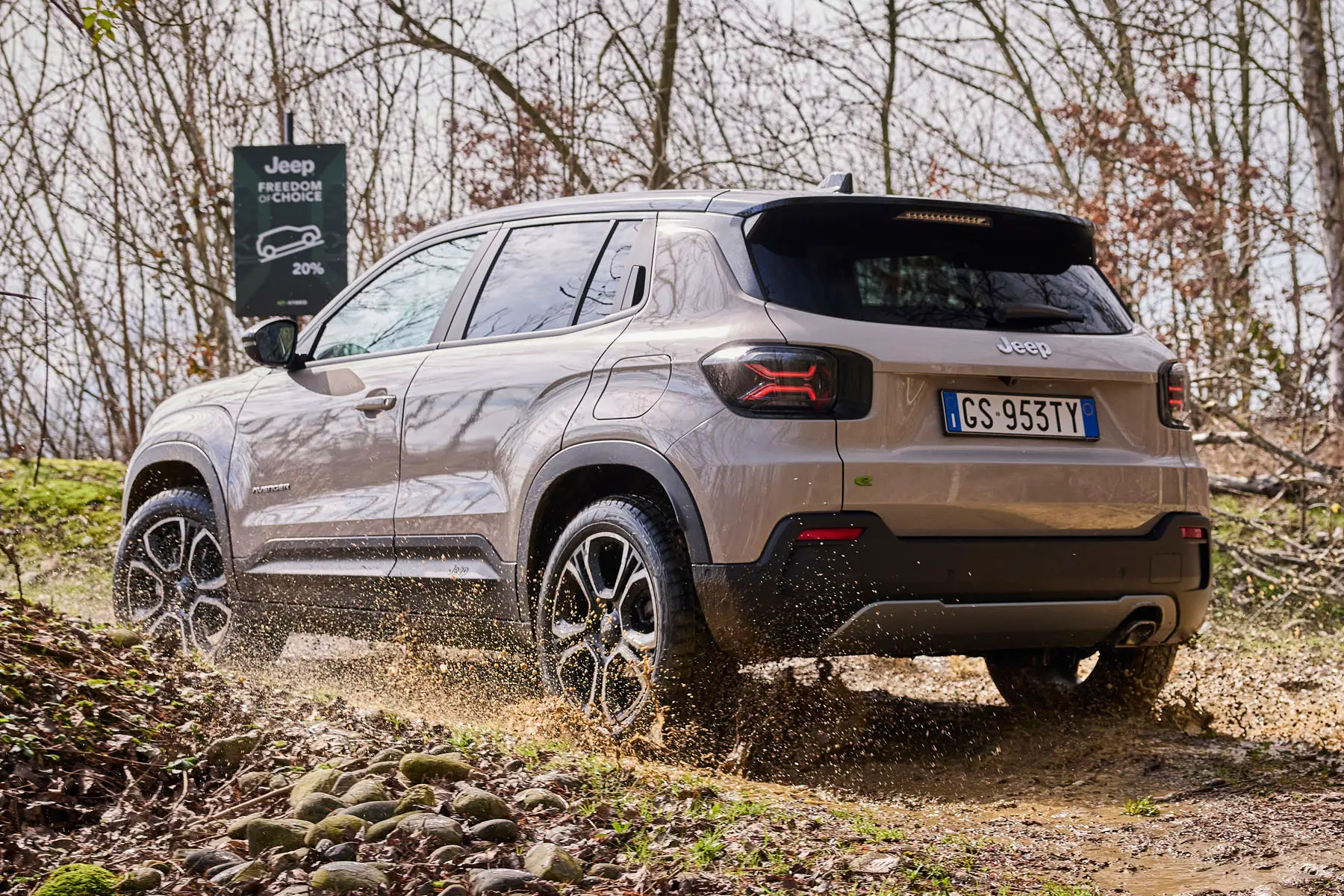
Think of the Avenger as ostensibly a city car with the ability to do longer journeys too. Light steering and an impressively tight turning circle – as well as its compact dimensions – make it a breeze to thread through tight gaps and park in relatively small spaces. Rougher road surfaces can make the ride a little choppy
At higher speeds there’s a modicum of wind noise, and we experienced a bit of rumble through the floor, although this could be due to the winter tyres that were fitted to our test car. It’s nowhere near as agile and enjoyable to drive as the Ford Puma – the light steering is great in town but lacks feel at higher speeds – but the Avenger is generally stable and composed through corners, and more than happy to cruise at motorway speeds.
Being a Jeep, the Avenger is contractually obligated to have at least some capability off-road. Although it’s front-wheel drive (a plug-in hybrid, four-wheel drive version, called the 4xe, is in the works), it’s actually more capable in the rough stuff than just about any rival. As well as hill descent control, Jeep’s Selec-Terrain system is standard on all models, letting you configure various settings to best tackle mud, snow and sand via a dial between the front seats. (It also has Normal, Sport and Eco settings for more conventional models.) The Avenger is no Suzuki Jimny when it comes to clambering over terrain, but with a reasonably high ground clearance and the ability to haul itself efficiently over mildly challenging surfaces, it should be able to cope with a field or a muddy track.
What engines and gearboxes are available in the Jeep Avenger e-Hybrid?
Although you can get an Avenger in pure petrol and full-electric models, the e-Hybrid has just the one – a 1.2-litre three-cylinder petrol engine, mated to a 48V electrical system and a 0.9kWh battery mounted under the left-hand seat, powering a 28PS electric motor that’s integrated into the six-speed, dual-clutch automatic gearbox. While technically a mild-hybrid system, it’s unusual in that it allows full-electric driving for 1km, which is around 0.6 of a mile.
It’s in town where this electric-only running is really useful and can make a big impact on your fuel economy. Jeep reckons around 20 percent pure-electric running is easily manageable, and based on our varied test route, which encompassed town, country and motorway driving, that seems conservative – according to the in-car readout, we managed to run on electric power alone for 27 percent of the time.
That can dramatically reduce your fuel costs compared to a pure petrol Avenger, and at purchase premium of only around £1700 when new. Obviously an all-electric Avenger would cut running costs further, but the purchase price is considerably higher.
The petrol engine cuts in and out seamlessly, and the automatic transmission, while not the quickest shifting gearbox of its type, is unobtrusive in its operation. While the 100PS petrol engine doesn’t have huge amounts of power, the electric boost takes things up to 128PS, making acceleration sprightly enough for most uses, even with a car full of people. It can be a touch noisy, but never intrusively so.
Refinement and noise levels
With a heritage of rough-and-readiness, you could forgive Jeep for not making the most refined of cars, especially at this price point. But the Avenger isn’t actually too bad. Sure, the suspension can be a little fussy over bad road surfaces, and the engine can sound a little stressed when worked hard and the gearshift could be slightly smoother and faster to respond.
But these are all very minor quibbles – overall, the Avenger e-Hybrid is comfortable, fairly quiet and easy to drive.
Safety equipment: How safe is the Jeep Avenger e-Hybrid?
The Avenger has yet to be tested by safety organisation EuroNCAP. However, it shares much of its engineering with the Citroen C4, Peugeot 2008 and the Vauxhall Mokka, all of which were given four-star ratings out of five. We’d expect a similar result for the Avenger if and when it’s tested.
For now, we can go from the amount of standard safety features included, which is considerable. Automatic emergency braking, lane-keep assist and traffic-sign recognition are all bundled in, as is Driver Attention Assist (which warns you if you get distracted from the road). The top-spec Summit model adds a blind-spot monitor, rear-view camera and 360-degree sensors for manoeuvring, and these are available as options on the mid-spec Altitude trim.
MPG and fuel costs: What does a Jeep Avenger e-Hybrid cost to run?
"The Avenger e-Hybrid should give you an appreciable fuel saving over the equivalent petrol version, and for only a small premium when you buy it."
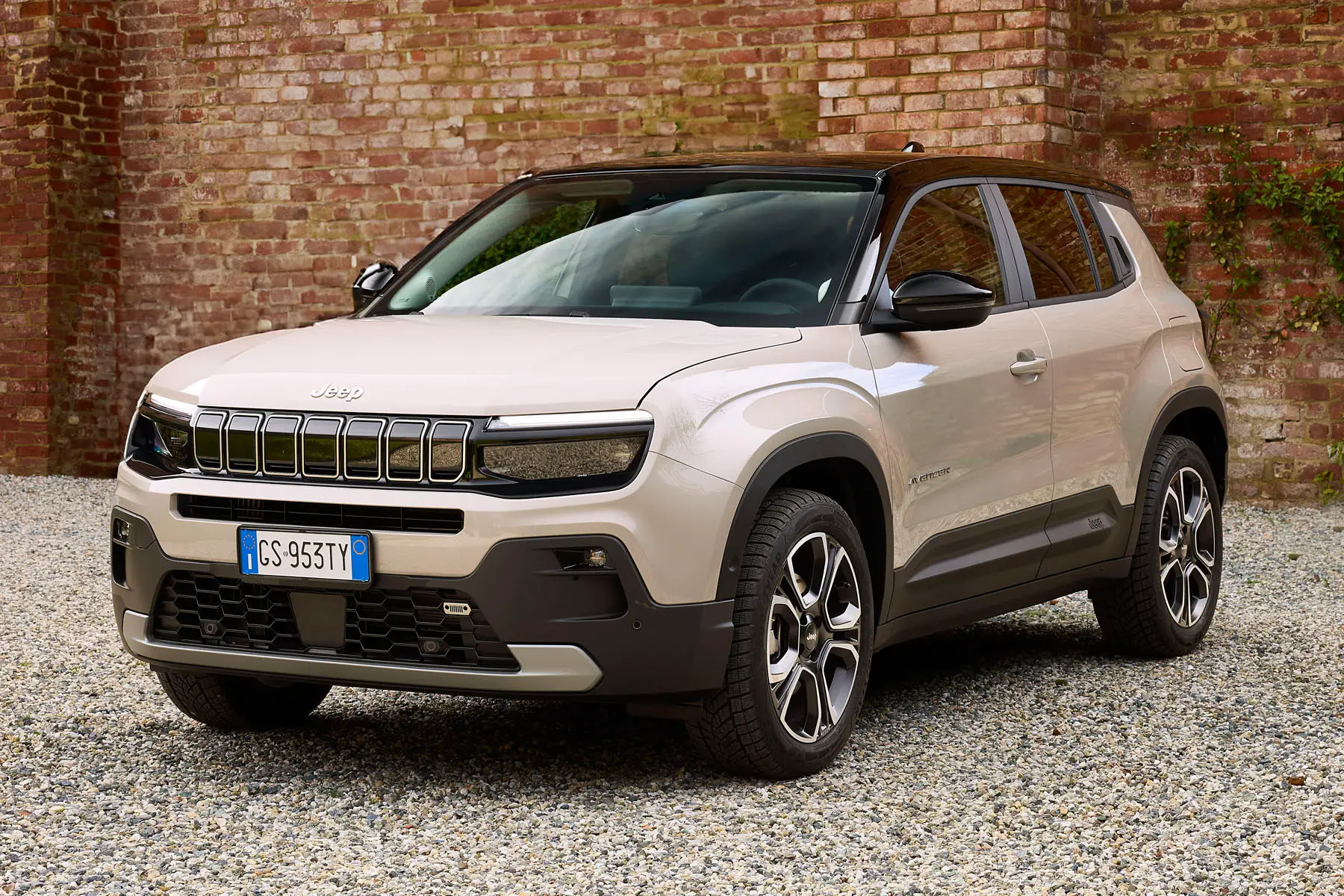
According to official figures, the hybridised Avenger will return up to 57.6mpg. That’s compared to 50.4mpg from the petrol model. When you consider the price difference is only around £1700, which works out to very little over the course of a typical finance contract, you have to wonder why you’d pick the petrol model.
Of course, if you want ultimate fuel saving then you’d go for the all-electric Avenger, but there’s a big price jump to get to the battery-powered model. However, the electric model is expected to hold its value better than the hybrid or petrol version, and it’ll cost less in Vehicle Excise Duty (car tax). It’ll be exempt from various clean air zone charges, too.
How reliable is a Jeep Avenger e-Hybrid?
It’s difficult to give an accurate estimation of the Jeep Avenger’s reliability as it’s so new. However,it shares a lot of parts with other brands from the Stellantis parent company – including cars like the Peugeot 2008, which has fared very well in recent independent reliability surveys.
The Avenger comes with a three-year warranty, which is pretty standard for the industry. That said, you’ll get better warranties from companies like Toyota and Hyundai (five years) and Kia (seven years).
Insurance groups and costs
Insurance groups for the hybrid Jeep Avenger haven’t yet been announced.
VED car tax: What is the annual road tax on a Jeep Avenger e-Hybrid?
All versions of the Jeep Avenger e-Hybrid cost less than £40,000 when new, so you won’t have to pay the surcharge levied on Vehicle Excise Duty for expensive cars. The first year of tax is absorbed into the purchase price, and for five years after that you’ll pay the standard flat rate of tax – currently £170 a year, as mild hybrid are eligible for the £10 annual discount for alternative fuel cars.
How much should you be paying for a used Jeep Avenger e-Hybrid?
"The hybrid version of the Avenger is brand new at the time of writing, so we don’t have an idea of what used prices will be."
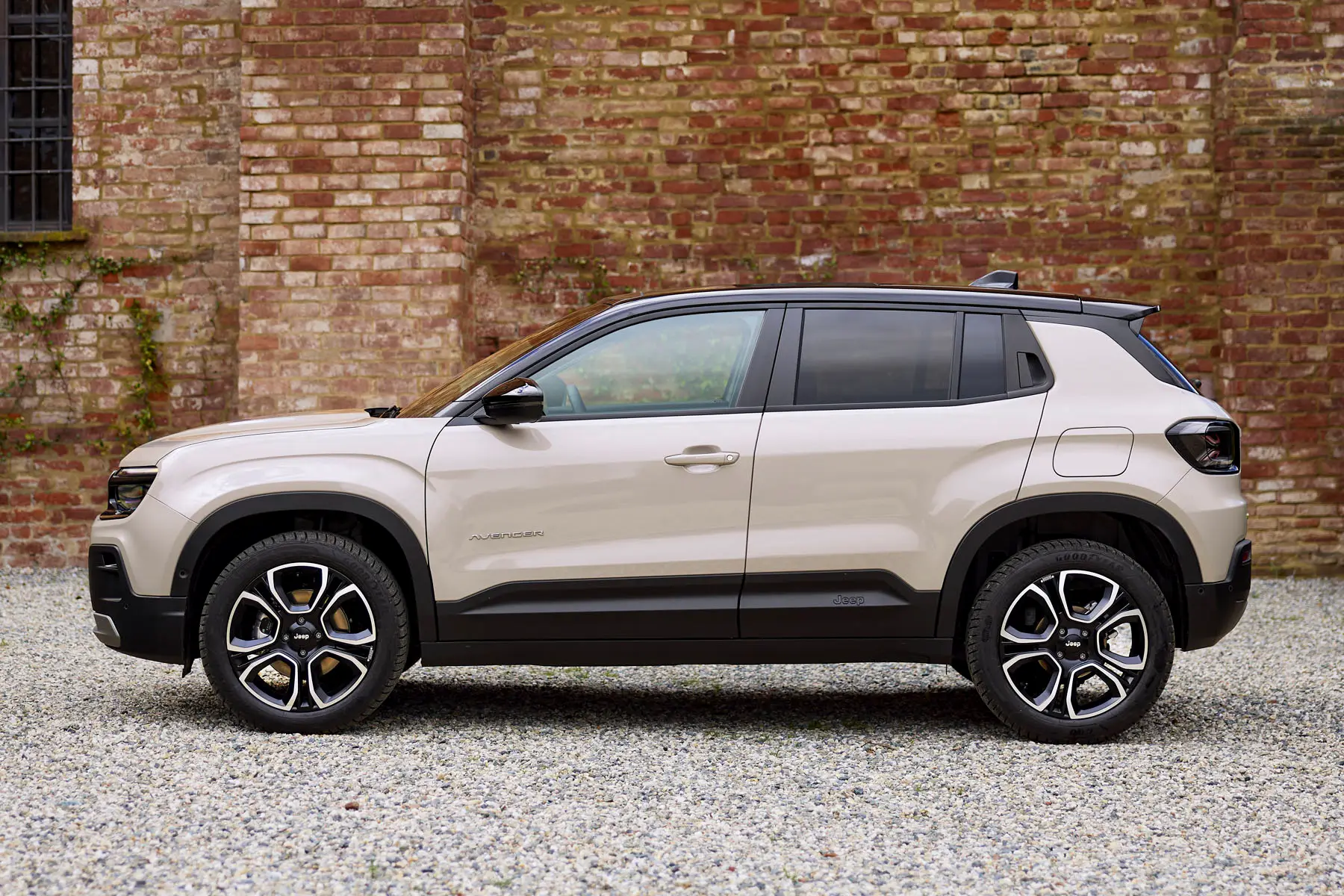
When new, the e-Hybrid Avenger is around £1700 more than an equivalent petrol model, and we suspect it’ll hold its value better due to its superior fuel economy.
The all-electric Avenger is predicted to hold onto its worth better than other versions, but it’s a good chunk more expensive to buy.
Trim levels and standard equipment
The entry-level Avenger trim is the Longitude model, which comes pretty well kitted out. As standard, you’ll get 16-inch alloy wheels and full LED headlights, as well as heated and electrically adjustable side mirrors, air conditioning and cruise control. Keyless entry and engine start is also included.
Upgrade to the Altitude trim and the wheels grow to 17 inches in size, and the seats get a fancier cloth and vinyl upholstery. The steering wheel is trimmed in synthetic leather, which is considerably nicer to hold than the urethane wheel in the Longitude model. There’s also a height adjustable boot floor for extra flexibility, adaptive cruise control and a larger digital instrument cluster. The air-con is upgraded to an automatic system, rather than a manual one.
The top-spec Avenger is the Summit. It rides on big 18-inch alloys, which look good but could negatively impact the ride quality (and wear more expensive tyres). Tinted glass and fog lamps are also added, as are heated front seats, along with a wireless phone charger, foldable side mirrors and an electric boot lid.
Ask the heycar experts: common questions
Is the Jeep Avenger a hybrid?
What is the hybrid engine in the Jeep Avenger?
What is the Jeep Avenger?
Similar Models
Stay up to speed with great offers plus the latest car news and reviews
Keep me updated by email with the latest advice, news and offers from heycar.
By submitting you agree to our privacy policy
